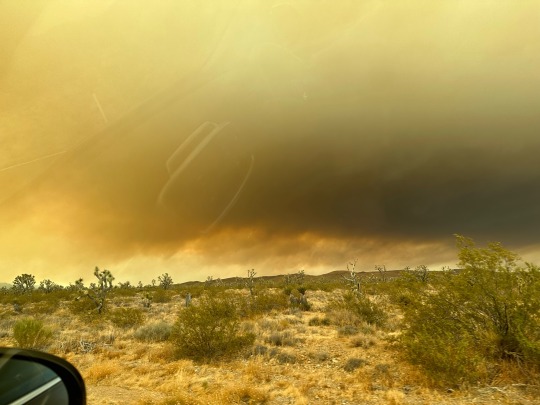#mojave national preserve
Text
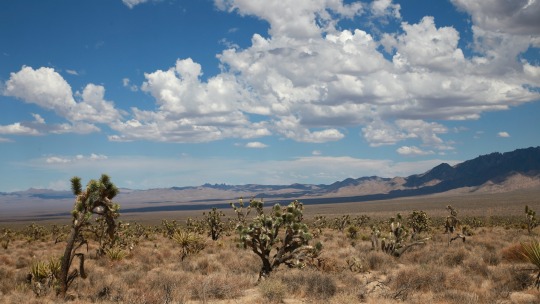


#mojave national preserve#Mojave desert#adventure#travel#my photo#southwest#desert#mountains#photography#aesthetic#landscape#scenery#California#Joshua trees
321 notes
·
View notes
Photo

Pretending that it’s never over
https://www.youtube.com/watch?v=AzISUQLKfhQ
The Mojave Desert
#mojave desert#film photography#indie#chad valley#zach bradley#emotive#american southwest#americana#southwest#places#mojave national preserve#original photography#photographers on tumblr#35mm#analog#california#decay nation#a e s t h e t i c#wanderlust#filmisnotdead#desert ghosts#ghosts in love#desert aesthetic#vintage aesthetic
160 notes
·
View notes
Text
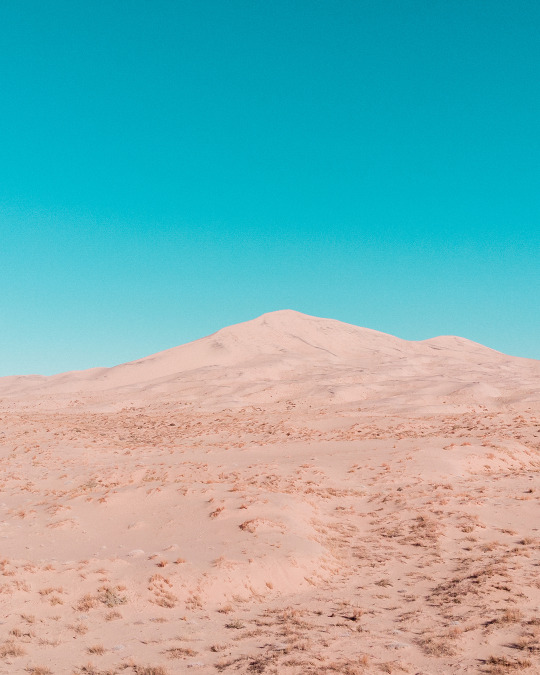
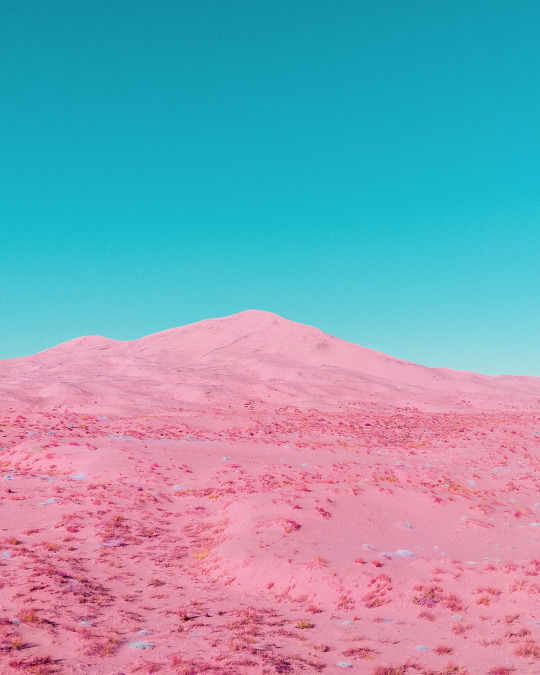
Swipe for a surprise! Desert or dessert? 🌵🏜️🐪🍦🍬🧁
What's your choice?
#kelso dunes#pink#pink aesthetic#desert#sand dunes#mojave desert#mojave national preserve#photoshop#photoshop edit#candy minimal#candy aesthetic#california#dessert#sweets
11 notes
·
View notes
Link

Flash flooding washed this car off Highway 190 in Death Valley National Park/NPS

Parts of Kelbaker Road in Mojave National Preserve have been completely destroyed/NPS

Then, mudslides at Big Bear Lake in the San Bernardino Mountains. Same monsoonal pattern of rain that clobbered Death Valley and the Mojave Preserve.
11 notes
·
View notes
Photo




Mojave National Preserve
May, 2021
#roadtrip#medium format#120#film#analog#mojave#joshua tree#fire#Mojave National Preserve#national park service
14 notes
·
View notes
Text
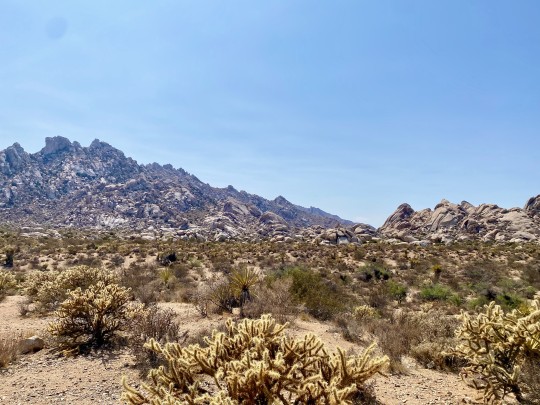
mojave national preserve, california
#mojave national preserve#mojave desert#mojave#nature#hiking#outdoors#views#cholla cactus#southwest#socal#socal2021#my photos
3 notes
·
View notes
Text


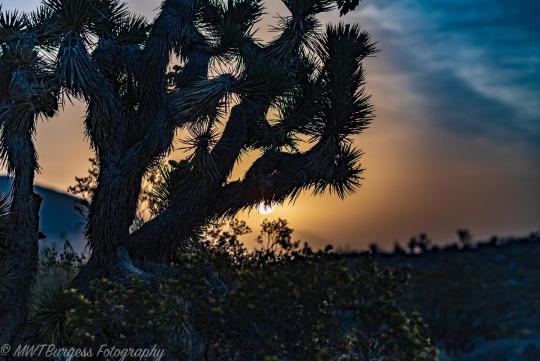
A very windy and dusty sunrise in the Mojave desert just outside Las Vegas Nevada.
#desert#lasvegas#mojave national preserve#lasvegasnevada#nikon#mojave desert#nikond750#sunrise#sunset
4 notes
·
View notes
Text
Kelso Hearth
The remains of a fireplace in the desert at the ghost town of Kelso, California, deep in the desert of the Mojave National Preserve.
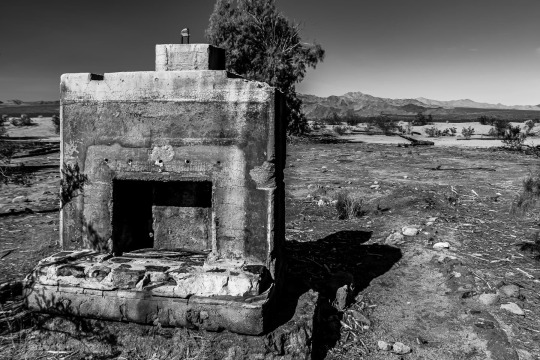
View On WordPress
#Abandoned#Black and White#California#Deserts#Ghost Towns#Landscapes#Mojave National Preserve#Mountains
1 note
·
View note
Text
LOS ÁRBOLES DE JOSUÉ, YUCCA BREVIFOLIA, LOS REYES VEGETALES DEL DESIERTO DE MOJAVE Y COLORADO, CALIFORNIA; Por Rosana Saburo
Camino hacia el Gran Cañón, el espectáculo estaba servido, un bosque de yuccas enseñaba sus formas caprichosas, retorcidas, eran un tipo de yuccas, brevifolia, nativas de esta zona de los desiertos de Mojave y Colorado, tan peculiares que para los expertos en esta materia, es muy difícil determinar su edad porque son de fibra, no cuentan con los anillos que podemos ver en el resto de los árboles…

View On WordPress
#amigos de arizona#árbol de Joshua#colorado desert#desert#desierto#el blog de Rosana Saburo#friends of arizona#joshua tree#mohave desert#mojave national preserve#viajarconrosana#yucca brevifolia
0 notes
Text
Raw Footage: Unprocessed Images from the Mojave Desert
When I make images there is usually a long lag before I share the picture. My recent Hotel Rooms, for example were photographed in September and October of last year, photoshopped in November (essentially correcting the geometry of the images), and then printed in December. That’s extraordinarily rapid. It can (and usually does) take a year or two from the pressing of the shutter button to the…
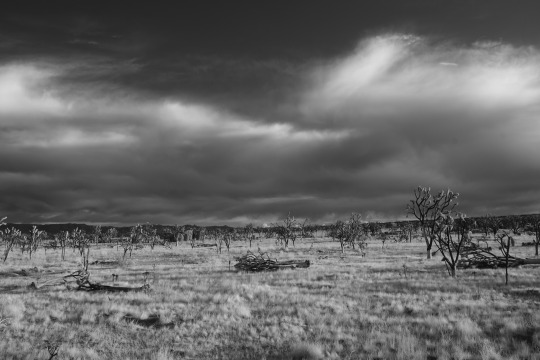
View On WordPress
1 note
·
View note
Text
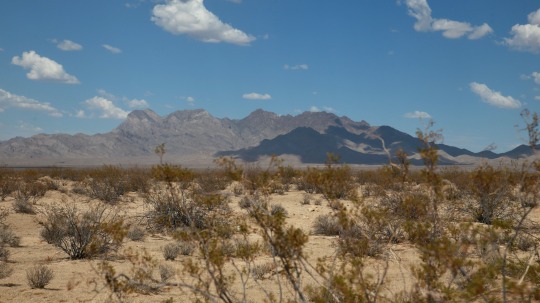
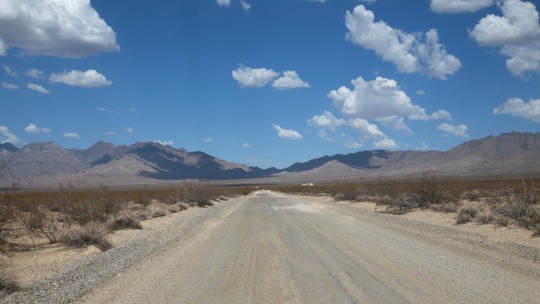

#mojave national preserve#adventure#travel#my photo#southwest#desert#Mojave#mojave desert#mountains#road#southern california#california#photography#scenery#aesthetic
425 notes
·
View notes
Text
A mix of surviving and burned joshua trees near Teutonia Peak, Mojave NP

0 notes
Text
As amazing as Fantastic Beast is with all of the interesting creatures and additional lore, I loathe the take on the American Magical World. And not because American pride (‘Merica🇺🇸🦅🇺🇸🦅🇺🇸🦅) but because that might work in New York, but that social structure sure as fuck don’t work the farther west you get.
Each state is different, it gives them their charms, and each state also has… drumroll please 🥁🥁🥁🥁
NATIVE AMERICANS!!! Yes the people who’ve been on these lands since before the first of the 13 colonies even existed!!!
Can you imagine Magical America? The creatures who lived alongside tribes? The giant forests? Hell, the other sentient beings like the centaurs, goblins, elves, etc.? Imagine:
The great Rivers and Lakes guarded by the merfolk and swimming with the great salmons, occasionally assisting the tribes along their borders so they all may share what the waters have to offer them
The great Plains and Forests with centaur tribes being mighty and powerful, guardians of the lands and occasionally allying with the human tribes
Elves that are still short but mighty and healthy and who get mistaken for native children when they live alongside human tribes
Goblins living deep in the caves of mountains, living happily with little human interaction besides for trading for safe passages and materials.
Imagine the werewolves loving their inner wolves and having their own tribes and living peacefully in their homes.
Imagine that, for thousands, and hundreds of years they lived in peace, occasionally waring against themselves but things happen of course but they way the magic and earth had never been so healthy as it was. Gods imagine Yellowstone or the Grand Canyon? Or the Mojave Desert? The great basins, the plateaus…
And then, when the Europeans started claiming the land that the magical beings fought to protect the lands they have lived on for centuries, the creatures of the forest hiding the remnants of their great lands from human eyes and hands, protecting the magic that slowly dies as the land gets destroyed and the magical beings who called those lands home started to die and could no longer protect the land.
That they tried to cling and hide and fight for their homes with whatever they could, but when the magical Europeans got involved it just went to hell for the magical beings.
The Native Reservations, National Parks/Lands, and deep into the mountains, are some of the few places that magical creatures can live in relative peace. The centaurs are not as many, and the elves either live on the reservations or the forests. The goblins are not like their European kin, but they are not the same as they were, now instead of trade for safe passage it is trade for protection of human materials or trading for goblin creations. The merfolk have perished in most lakes and rivers where humans have polluted or hunted their food to extinction. The magical creatures who once lived on the land are either hunted down for sport or for being declared born of hell.
Now imagine Ilvermorny, created by a mother who wanted her children to learn magic, and turned into a way for tribes to take shelter and teach their ways as well as learn other ways for magic. The school cropping up in the midst of Magical Americas downfall becomes a place that the few tribes not driven out of their home learn different form of magic while creating a foundation for Native American magic to survive and be taught in the school. Imagine multiple sister schools (because America is too big for there ti be only one school) to the original Ilvermorny being created to teach, to embrace and preserve a culture they refuse to let be erased.
Years later and it is a core course that gets taught, and keeps a part of a culture alive that was on the bring of complete erasure.
Imagine that when African slaves started appearing and become enslave, those who escaped and found themselves at Ilvermorny schools, they started teaching their magics as well. Then as more minorities started to appear in America, so did the lessons in certain Ilvermorny schools where these minorities were prevalent.
America is a cauldron full of magical cultures being mixed, and Ilvermorny is the first to openly teach different magical cultures. The southern schools involve more Mexican, Spaniard, some French, and African magical courses, while the north is more French. The east coast is more influenced by British magics, while the west coast is influenced by the Spaniard, Chinese, and Russian.
They all had their own mix and all have the main course shared by the people who lived their first, but magical america is sooo much more more fascinating and so young still! There is still so much that I can’t possibly cover without a month of research! And we haven’t even reached the southern hemisphere!
Fantastic Beast is great, but it’s missing the uniqueness and complexity of America. And I can only dip a finger into the endless possibilities of the magical American world.
#magical world#magical creatures#imagine it#magical america#Native Americans in the magical world of Harry Potter#Harry Potter world building#ilvermony school of witchcraft and wizardry#Ilvermorny#centaur#goblins#house elves#merpeople#merfolk#tribes#america#America before colonization#world building#expanding worlds#fantasy world building#magical world building#Harry Potter magic#magical world of Harry Potter
111 notes
·
View notes
Text
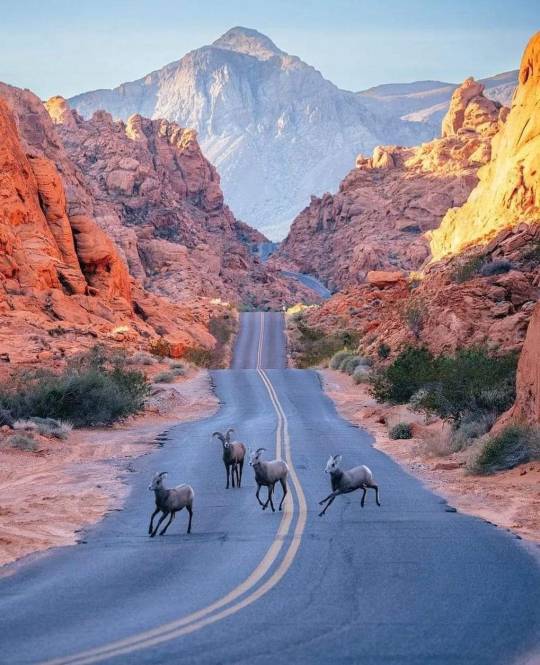
➤ Valley of Fire State Park is a public recreation and nature preservation area covering nearly 46,000 acres (19,000 ha) located 16 miles (26 km) south of Overton, Nevada. The state park derives its name from red sandstone formations, the Aztec Sandstone, which formed from shifting sand dunes 150 million years ago. These features, which are the centerpiece of the park's attractions, often appear to be on fire when reflecting the sun's rays. It is Nevada's oldest state park, as commemorated with Nevada Historical Marker #150. It was designated as a National Natural Landmark in 1968. Valley of Fire is located in the Mojave Desert 50 miles (80 km) northeast of Las Vegas, at an elevation between 1,320–3,009 feet (402–917 m). It abuts the Lake Mead National Recreation Area on the east at the Virgin River confluence. It lies in a 4 by 6 mi (6.4 by 9.7 km) basin.
📷@codymayer22
61 notes
·
View notes
Text
On a spring day in 1978, a fisherman caught a tiger shark in the lagoon surrounding Enewetak Atoll, part of the Marshall Islands in the north Pacific. That shark, along with the remains of a green sea turtle it had swallowed, wound up in a natural history museum. Today, scientists are realizing that this turtle holds clues to the lagoon’s nuclear past—and could help us understand how nuclear research, energy production, and warfare will affect the environment in the future.
In 1952, the world’s first hydrogen bomb test had obliterated a neighboring island—one of 43 nuclear bombs detonated at Enewetak in the early years of the Cold War. Recently, Cyler Conrad, an archeologist at Pacific Northwest National Laboratory, began investigating whether radioactive signatures of those explosions had been archived by some particularly good environmental historians: turtles.
“Anywhere that nuclear events have occurred throughout the globe, there are turtles,” Conrad says. It’s not because turtles—including sea turtles, tortoises, and freshwater terrapins—are drawn to nuclear testing sites. They’re just everywhere. They have been mainstays of mythology and popular culture since the dawn of recorded history. “Our human story on the planet is really closely tied to turtles,” Conrad says. And, he adds, because they are famously long-lived, they are uniquely equipped to document the human story within their tough, slow-growing shells.
Collaborating with researchers at Los Alamos National Laboratory, which was once directed by J. Robert Oppenheimer, Conrad was able to use some of the world’s most advanced tools for detecting radioactive elements. Last week, his team’s study in PNAS Nexus reported that this turtle, and others that had lived near nuclear development sites, carried highly enriched uranium—a telltale sign of nuclear weapons testing—in their shells.
Turtle shells are covered by scutes, plates made of keratin, the same material in fingernails. Scutes grow in layers like tree rings, forming beautiful swirls that preserve a chemical record of the turtle’s environment in each sheet. If any animal takes in more of a chemical than it’s able to excrete, whether through eating it, breathing it in, or touching it, that chemical will linger in its body.
Once chemical contaminants—including radionuclides, the unstable radioactive alter egos of chemical elements—make their way into scute, they’re basically stuck there. While these can get smeared across layers in tree rings or soft animal tissues, they get locked into each scute layer at the time the turtle was exposed. The growth pattern on each turtle’s shell depends on its species. Box turtles, for example, grow their scute outward over time, like how humans grow fingernails. Desert tortoise scutes also grow sequentially, but new layers grow underneath older layers, overlapping to create a tree ring-like profile.
Because they are so sensitive to environmental changes, turtles have long been considered sentinels of ecosystem health—a different kind of canary in the coal mine. “They’ll show us things that are emergent problems,” says Wallace J. Nichols, a marine biologist who was not involved in this study. But Conrad’s new findings reveal that turtles are also “showing us things that are distinct problems from the past.”
Conrad’s team at Los Alamos handpicked five turtles from museum archives, with each one representing a different nuclear event in history. One was the Enewetak Atoll green sea turtle, borrowed from the Bernice Pauahi Bishop Museum in Honolulu, Hawaii. Others included a Mojave desert tortoise collected within range of fallout from the former Nevada Test Site; a river cooter from the Savannah River Site, which manufactured fuel for nuclear weapons; and an eastern box turtle from Oak Ridge, which once produced parts for nuclear weapons. A Sonoran desert tortoise, collected far from any nuclear testing or manufacturing sites, served as a natural control.
While working at Los Alamos, Conrad met isotope geochemist and soon-to-be coauthor Jeremy Inglis, who knew how to spot even the most subtle signs of nuclear exposure in a turtle shell. They chose to look for uranium. To a geochemist, this might initially feel like an odd choice. Uranium is found everywhere in nature, and doesn’t necessarily flag anything historically significant. But with sensitive-enough gear, uranium can reveal a lot about isotope composition, or the ratio of its atoms containing different configurations of protons, electrons, and neutrons. Natural uranium, which is in most rocks, is configured very differently from the highly enriched uranium found in nuclear labs and weapons.
To find the highly enriched uranium hidden among the normal stuff in each turtle shell sample, Inglis wore a full-body protective suit in a clean room to keep his uranium from getting in the way. (“There’s enough uranium in my hair to contaminate a picogram of a sample,” he says.) Inglis describes the samples like a gin and tonic: “The tonic is the natural uranium. If you add lots of natural uranium tonic into your highly enriched uranium gin, you ruin it. If we contaminate our samples with natural uranium, the isotope ratio changes, and we can’t see the signal that we’re looking for.”
The team concluded that all four turtles that came from historic nuclear testing or manufacturing sites carried traces of highly enriched uranium. The Sonoran desert tortoise that had never been exposed to nuclear activity was the only one without it.
They collected bulk scute samples from three of their turtles, meaning that they could determine whether the turtle took in uranium at some point in its life, but not exactly when. But the researchers took things a step further with the Oak Ridge box turtle, looking at changes in uranium isotope concentrations across seven scute layers, marking the seven years of the turtle’s life between 1955 and 1962. Changes in the scutes corresponded with fluctuations in documented uranium contamination levels in the area, suggesting that the Oak Ridge turtle’s shell was time-stamped by historic nuclear events. Even the neonatal scute, a layer that grew before the turtle hatched, had signs of nuclear history passed down from its mother.
It’s unclear what this contamination meant for the turtles’ health. All of these shells were from long-dead animals preserved in museum archives. The best time to assess the effects of radionuclides on their health would have been while they were alive, says Kristin Berry, a wildlife biologist specializing in desert tortoises at the Western Ecological Research Center, who was not involved in this study. Berry adds that further research, using controlled experiments in captivity, may help figure out exactly how these animals are taking in nuclear contaminants. Is it from their food? The soil? The air?
Because turtles are nearly omnipresent, tracing nuclear contamination in shells from animals living at various distances from sites of nuclear activity may also help us understand the long-term environmental effects of weapons testing and energy production. Conrad is currently analyzing desert tortoise samples from southwestern Utah, collected by Berry, to better relate exposure to radionuclides (like uranium) to their diets over the course of their lives. He also hopes that these findings will inspire others to study plants and animals with tissues that grow sequentially—like mollusks, which are also found in nearly all aquatic environments.
The incredible migratory patterns of sea turtles, which sometimes span the entire ocean (as anyone familiar with Finding Nemo may recall), open up additional opportunities. For example, sea turtles forage off the Japanese coast, where in 2011 the most powerful earthquake in Japan’s history caused a tsunami that led to a chain reaction of failures at the Fukushima Daiichi Nuclear Power Plant. With lifespans of up to 100 years, many of those turtles are likely still alive today, carrying traces of the disaster on their backs.
Recently, the Japanese government started slowly releasing treated radioactive water from the Fukushima Daiichi plant into the Pacific Ocean. Scientists and policymakers seem to hesitantly agree that this is the least bad option for disposing of the waste, but others are more concerned. (The Chinese government, for instance, banned aquatic imports from Japan in late August.) Through turtle shells, we may better understand how the plant’s failure, and the following cleanup efforts, affect the surrounding ocean.
The bodies of these creatures have been keeping score for millennia. “For better or for worse, they get hit by everything we do,” Nichols says. Maybe, he adds, “the lesson is: Pay more attention to turtles.”
50 notes
·
View notes

